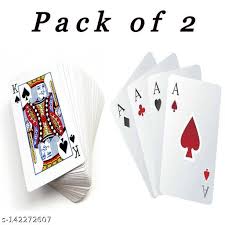Rummy How Many Decks, a classic card game enjoyed worldwide, is played with various rules and variations, each with unique characteristics. One common question among players, especially beginners, is: “How many decks are needed to play Rummy?” The answer varies depending on the specific variation of Rummy being played. In this article, we’ll explore the deck requirements for different versions of Rummy and explain the reasoning behind these choices.
Basic Rummy Deck Requirements
The number of decks used in Rummy typically depends on the number of players and the specific variant of the game. Here’s a general overview:
- Single-Deck Rummy:
- A standard 52-card deck is used, which includes the four suits (hearts, diamonds, clubs, and spades) each containing 13 cards (from Ace to King).
- This setup is common in many basic forms of Rummy, such as Gin Rummy, especially when played with two players.
- Double-Deck Rummy:
- Two standard 52-card decks are combined, often including one or two Jokers per deck.
- This setup is prevalent in variants with more players or those that require a larger hand of cards, such as Indian Rummy or Kalooki.
Specific Variants and Deck Requirements
1. Classic Rummy
In traditional Rummy, which can be played by 2-6 players, a single 52-card deck is typically sufficient. However, if more players are involved, or if players prefer a longer game with more complex hands, a second deck may be introduced.
2. Gin Rummy
Gin Rummy, usually played by two players, uses a single 52-card deck without jokers. This variant focuses on forming sets and runs, with the goal of “knocking” or going “Gin” when a player can lay down all their cards.
3. Indian Rummy
Indian Rummy, also known as Paplu, is played with two decks of 52 cards each, plus a total of two to six jokers. This version requires players to form at least two sequences, one of which must be pure (without a joker), along with other sets or sequences.
4. Canasta
Canasta, a variant that involves melding cards into groups of the same rank, uses two standard decks plus four jokers, making a total of 108 cards. The game can be played by two to six players, with the goal of forming “canastas” (seven cards of the same rank).
5. 500 Rummy
In 500 Rummy, the number of decks can vary, but typically, two 52-card decks are used along with four jokers. The game is point-based, and players aim to score 500 points by melding cards into sets and runs.
6. Kalooki
Kalooki, another variant that uses jokers, generally employs two 52-card decks plus four jokers. Players aim to lay down all their cards in valid sets or runs, with the inclusion of jokers adding flexibility to melds.
Why Use Multiple Decks?
The use of multiple decks in Rummy serves several purposes:
- Accommodating More Players:
- More decks allow more players to participate without limiting the variety and availability of cards, ensuring a fair distribution.
- Increasing Game Complexity:
- Additional decks introduce more potential combinations and strategies, enhancing the game’s complexity and challenge.
- Extended Gameplay:
- With more decks, players can enjoy longer rounds and a more extended overall game, making it more engaging.
- Inclusion of Jokers:
- Jokers, often used as wild cards, are more effectively included when multiple decks are used. This increases the chance of drawing these versatile cards, allowing for more flexible and creative play.
Conclusion
The number of decks required for Rummy varies widely based on the specific variant and the number of players. While a single deck is often sufficient for basic or two-player games, double-deck setups are common in more complex versions or games with more participants. Understanding the deck requirements for each variant ensures that players have a clear and enjoyable gaming experience, with ample cards to form winning combinations and strategies. Whether you’re playing a casual game with friends or participating in a more competitive setting, knowing the appropriate number of decks is a key aspect of mastering Rummy.




